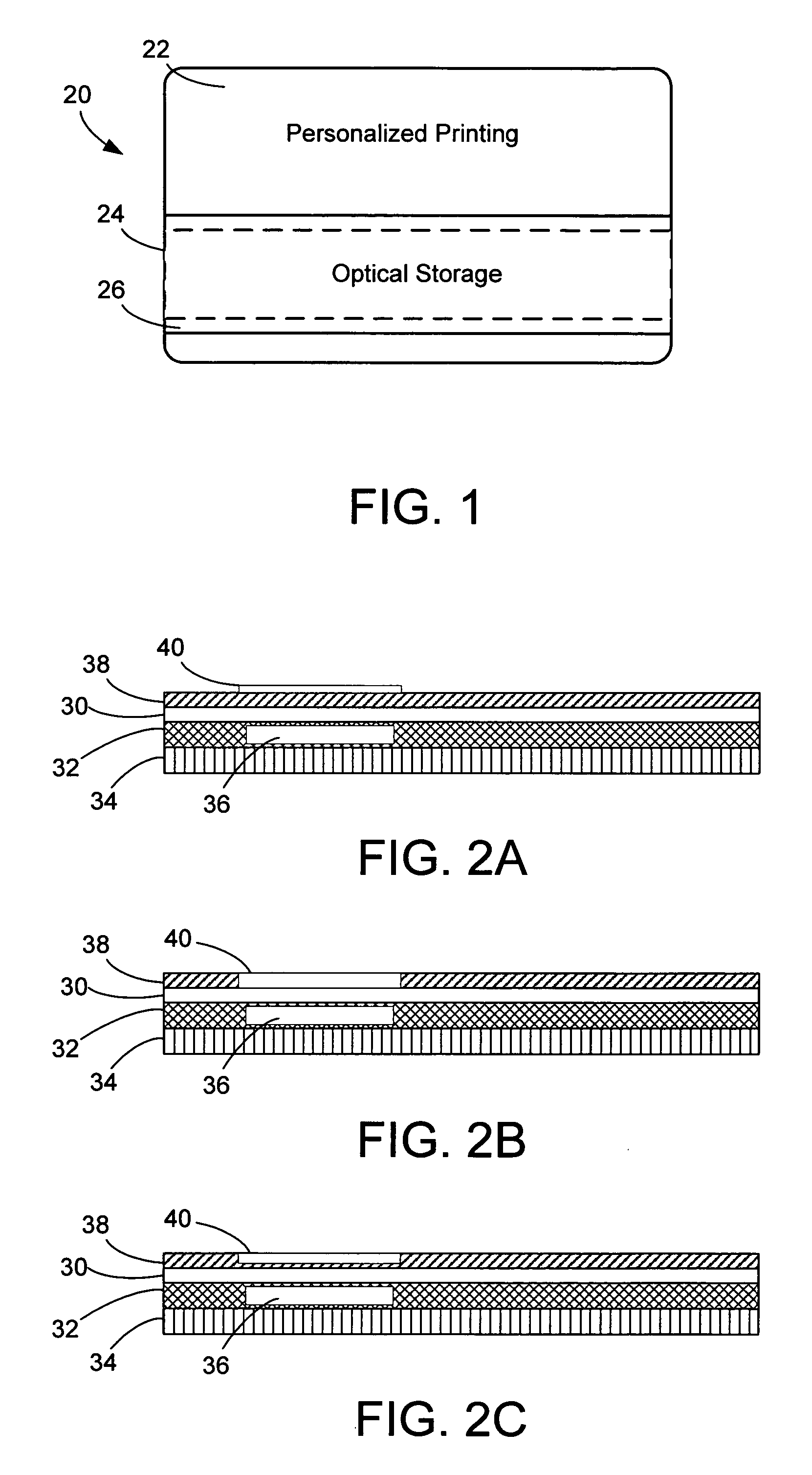Hard coat and image receiving layer structures for identification documents
a technology of identification documents and receiving layers, applied in the field of identification and security documents, can solve the problems of image receiving layers, reducing the manufacturing yield of identification documents, and reducing the yield of d2t2, so as to achieve the effect of durable interface and enhanced durability in manufacture and field us
- Summary
- Abstract
- Description
- Claims
- Application Information
AI Technical Summary
Benefits of technology
Problems solved by technology
Method used
Image
Examples
Embodiment Construction
[0026]FIG. 1 is a diagram illustrating a top surface of an ID document structure 20. The surface of the document includes a first area for receiving personalized printing 22, and a second area that serves as an optical window for an optical storage medium 24. The optical storage medium is shown in dashed lines to reflect that it is embedded in layers of the document structure. A strip of a protective hard coat 26 sits on top of the optical window, covering a portion of the ID document surface.
[0027]This diagram shows the protective hard coat layer in a stripe format overlapping a portion of the document surface that forms a window for the optical storage media. This format enables the hard coat layer to be placed over a sub-area of the total surface area of the document, leaving the remaining area covered by an image receiving layer exposed for variable printing. One or more stripes or other geometric arrangements of the hard coat layer may be placed over an image receiving layer (e...
PUM
| Property | Measurement | Unit |
|---|---|---|
| weight | aaaaa | aaaaa |
| haze | aaaaa | aaaaa |
| structure | aaaaa | aaaaa |
Abstract
Description
Claims
Application Information
 Login to View More
Login to View More - R&D
- Intellectual Property
- Life Sciences
- Materials
- Tech Scout
- Unparalleled Data Quality
- Higher Quality Content
- 60% Fewer Hallucinations
Browse by: Latest US Patents, China's latest patents, Technical Efficacy Thesaurus, Application Domain, Technology Topic, Popular Technical Reports.
© 2025 PatSnap. All rights reserved.Legal|Privacy policy|Modern Slavery Act Transparency Statement|Sitemap|About US| Contact US: help@patsnap.com



